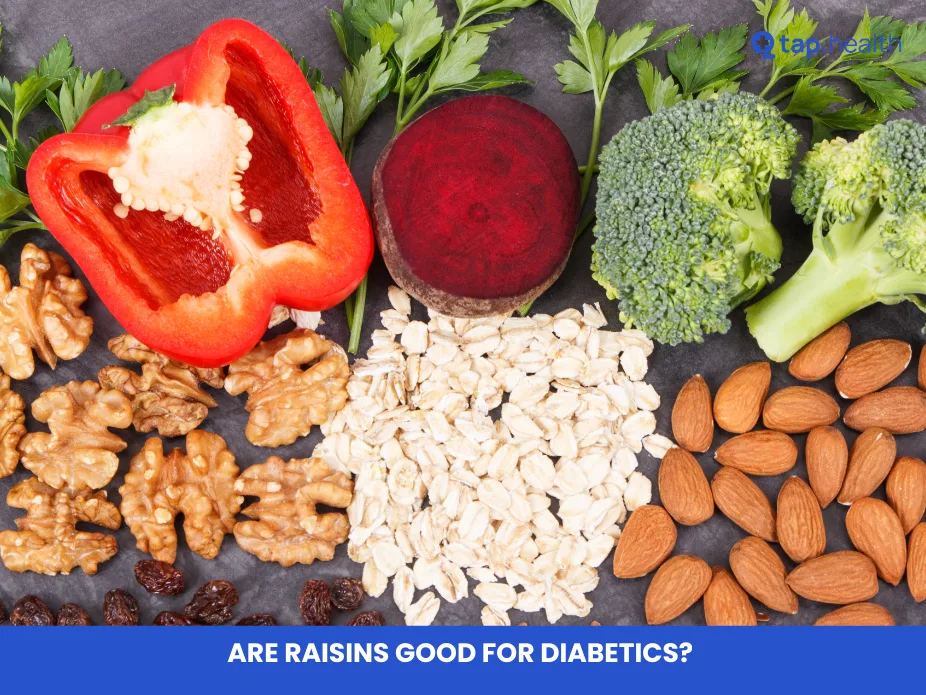Jaggery, a traditional sweetener widely used in India, is often touted as a healthier alternative to white sugar due to its natural origins and nutrient content. However, for individuals managing diabetes, understanding how jaggery affects blood sugar is critical. This blog explores whether jaggery is suitable for diabetics, its nutritional profile, glycemic index, and expert insights, addressing common questions like “Is jaggery better than sugar for diabetes?” and “How much jaggery is safe for diabetics?”
What Is Jaggery and Its Role in the Indian Diet?
Jaggery, known as “gur” in India, is an unrefined sweetener derived from sugarcane juice or palm sap. It’s a staple in Indian cuisine, used in traditional sweets, desserts, and even savory dishes for its distinct flavor. Beyond its culinary uses, jaggery holds cultural significance, featuring prominently in festivals like Pongal and Makar Sankranti, symbolizing prosperity and harvest.
In Ayurveda, jaggery is valued for its warming properties, believed to aid digestion, boost immunity, and provide energy, particularly in colder months. However, its high sugar content raises concerns for those with diabetes, prompting a closer look at its suitability.
Types of Jaggery: Which One Is Best?
India produces various types of jaggery, each with unique flavors and purported health benefits:
- Sugarcane Jaggery: The most common type, available in blocks, granules, or powder, with a molasses-like taste.
- Date Palm Jaggery (Karupatti): Made from date palm sap, it’s darker, smokier, and often considered richer in iron.
- Coconut Jaggery: Derived from coconut palm sap, it has a milder sweetness and is believed to have a lower glycemic index (GI).
While these varieties differ in taste and nutrient content, their impact on blood sugar remains a key concern for diabetics.
Nutritional Profile of Jaggery: Does It Benefit Diabetics?
Jaggery contains trace amounts of vitamins and minerals, including:
- Iron: Supports red blood cell production.
- Magnesium: Aids muscle and nerve function, potentially helping with blood sugar regulation.
- Potassium: Assists in blood pressure control.
- Calcium: Contributes to bone health.
However, these nutrients are present in small quantities, and consuming large amounts of jaggery to gain significant benefits would lead to excessive sugar intake, which is risky for diabetics.
Comparison of Jaggery vs. Sugar (per 100g):
| Nutrient | Jaggery | Sugar |
|---|---|---|
| Calories | 383 | 387 |
| Carbohydrates | 98.06g | 100g |
| Sugars | 95.21g | 100g |
| Glycemic Index | 54-84 | 65 |
Jaggery’s high sugar content overshadows its minimal nutritional advantages for those with diabetes.
What Is the Glycemic Index of Jaggery?
The glycemic index (GI) measures how quickly a carbohydrate-containing food raises blood sugar levels. Jaggery’s GI ranges from 54 to 84, depending on its type and processing. A higher GI indicates a faster spike in blood glucose, which is problematic for diabetics. For comparison, table sugar has a GI of around 65, meaning some jaggery types may cause a more rapid blood sugar increase.
Is Jaggery Good for Diabetes?
Despite its natural origins, jaggery is not a suitable sweetener for people with diabetes. Its high sugar content, primarily sucrose, and elevated GI can lead to rapid blood sugar spikes, making it challenging to maintain stable glucose levels. While jaggery contains minor nutrients, these do not outweigh the risks for diabetics.
For those with diabetes, low-GI sweeteners or minimal use of jaggery under medical supervision is recommended.
Jaggery vs. Sugar: Which Is Better for Diabetics?
Both jaggery and white sugar are high in sucrose, impacting blood sugar similarly. Jaggery is less processed, retaining small amounts of minerals, but this does not make it significantly better for diabetes management. Both should be consumed sparingly, if at all, by diabetics to avoid glucose spikes.
How Does Jaggery Affect Blood Sugar Levels?
Jaggery’s high sucrose content causes rapid blood sugar increases, potentially leading to hyperglycemia. Symptoms of high blood sugar include increased thirst, frequent urination, and fatigue. Over time, frequent consumption of high-GI foods like jaggery can elevate the risk of complications such as nerve damage, kidney issues, and heart disease.
Diabetics should monitor their blood sugar closely if consuming jaggery and consult a healthcare provider to determine safe amounts.
Which Type of Jaggery Is Best for Diabetes?
No type of jaggery—whether sugarcane, date palm, or coconut—is considered safe for diabetics due to its high sugar content and GI. While some claim date palm or coconut jaggery has a slightly lower GI, they still pose risks for blood sugar control. Consulting a dietitian is essential before including any jaggery in a diabetic diet.
Health Benefits of Jaggery: Are They Relevant for Diabetics?
Jaggery is often praised for its health benefits, but these are minimal for diabetes management:
- Calcium for Bone Health: Jaggery contains trace calcium, but dairy, leafy greens, or fortified foods are better sources.
- Potassium for Blood Pressure: Small amounts of potassium exist in jaggery, but fruits and vegetables like bananas and avocados are more effective.
- Magnesium for Nerve Health: Jaggery’s magnesium content is low compared to nuts, seeds, and leafy greens.
For diabetics, the high sugar content negates these benefits, making jaggery an unsuitable choice.
How Much Jaggery Can Diabetics Consume Daily?
There is no universally safe amount of jaggery for diabetics due to its impact on blood sugar. If consumed, it should be in very small quantities, accounted for in the daily carbohydrate intake, and monitored closely with a glucometer. Always consult a healthcare provider for personalized advice.
Risks and Side Effects of Jaggery for Diabetics
Consuming jaggery can pose several risks for diabetics:
- Weight Gain: High sugar content may contribute to weight gain, worsening insulin resistance.
- Elevated Triglycerides: Excessive jaggery intake can increase triglyceride levels, raising heart disease risk.
- Blood Sugar Spikes: Rapid glucose increases can lead to hyperglycemia and long-term complications.
Careful monitoring and moderation are crucial to avoid these risks.
Comparing Jaggery to Other Sweeteners for Diabetes
When comparing jaggery to other sweeteners:
- Brown Sugar: Similar to jaggery, it has a high GI and minimal nutrients.
- Honey: Like jaggery, honey has a high GI, making it unsuitable for diabetics.
- Artificial Sweeteners: These have minimal impact on blood sugar but may have other health concerns.
A dietitian can recommend safer alternatives based on individual health needs.
Expert Opinions on Jaggery for Diabetes Management
Health experts caution against using jaggery as a sugar substitute for diabetics due to its high GI and sugar content. Instead, they recommend a balanced diet rich in low-GI foods, fiber, lean proteins, and healthy fats to maintain stable blood sugar levels. Consulting a healthcare provider is essential before incorporating jaggery.
Frequently Asked Questions About Jaggery and Diabetes
1. Can jaggery be a safe sugar substitute for diabetics?
No, jaggery’s high sugar content and GI make it unsuitable for diabetics as it can cause blood sugar spikes.
2. How much jaggery is safe for a diabetic to consume daily? There’s no safe daily amount; consult a healthcare provider to determine if small amounts are permissible.
3. Does jaggery have benefits for diabetes management? Jaggery’s minimal nutrients do not justify its high sugar content, which can disrupt blood glucose control.
4. Are some types of jaggery better for diabetics?
No type of jaggery is ideal for diabetics due to its sugar content and potential to raise blood sugar.
5. What precautions should diabetics take with jaggery?
Consume sparingly, monitor blood sugar closely, and consult a doctor or dietitian before use.
6. Does jaggery raise blood sugar?
Yes, its high GI and sugar content cause rapid blood sugar increases, posing risks for diabetics.
7. Is jaggery better than sugar for diabetics?
Neither is ideal; both have high sugar content and should be limited in a diabetic diet.
8. Is honey better than jaggery for diabetics?
Both honey and jaggery have high GI values and are not recommended for diabetics.
9. Which sugar is best for diabetics?
No sugar is ideal; low-GI sweeteners or minimal sugar intake under medical guidance is best.
Conclusion
Jaggery, while a natural and culturally significant sweetener, is not a safe choice for people with diabetes due to its high glycemic index and sugar content. Despite its minor nutritional benefits, such as trace amounts of iron, magnesium, and potassium, these do not outweigh the risks of blood sugar spikes and related complications. Diabetics should prioritize low-GI foods and consult healthcare professionals for personalized dietary advice. Moderation, careful monitoring, and a balanced diet remain key to effective diabetes management.



